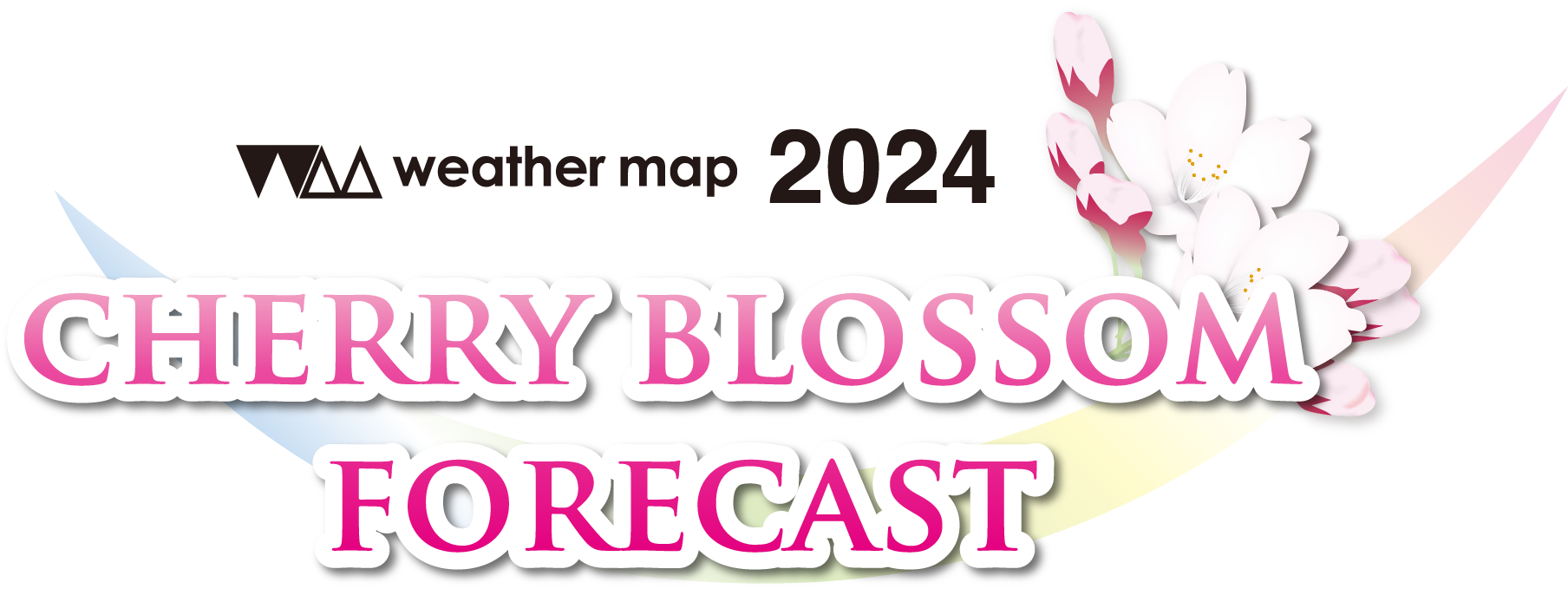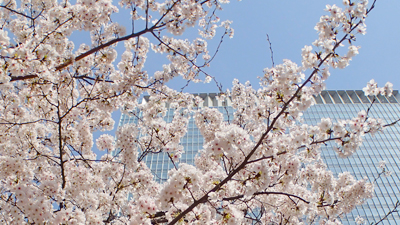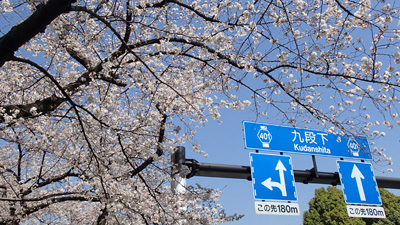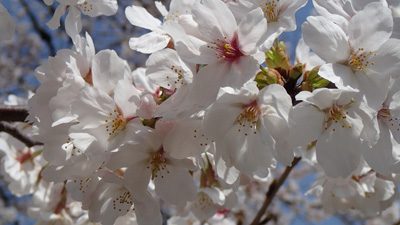
The cherry blossoms are taking a slight pause due to a return of cold weather. In regions like Tokyo, where the bloom was earlier, the flowers have reached full bloom and this weekend looks promising for enjoying them. This year, cherry blossoms in areas from Kanto to the west have bloomed around the average time, while the bloom is expected to be earlier in northern Japan.
(Updated Apr 7, 2025)

Note: Detailed forecast is only available in Japanese.
| Kanto/Koshin | ||
| Cities | First bloom | Full bloom |
| Mito | 3/27 | 4/8 |
| Utsunomiya | 3/28 | 4/9 |
| Maebashi | 3/28 | 4/7 |
| Kumagaya | 3/27 | 4/7 |
| Tokyo | 3/24 | 3/30 |
| Choshi | 3/27 | 4/7 |
| Yokohama | 3/25 | 4/4 |
| Nagano | 4/8 | 4/13 |
| Kofu | 3/26 | 4/4 |
| Tokai/Hokuriku | ||
| Cities | First bloom | Full bloom |
| Shizuoka | 3/26 | 4/3 |
| Nagoya | 3/26 | 4/4 |
| Gifu | 3/25 | 3/31 |
| Tsu | 3/28 | 4/2 |
| Niigata | 4/6 | 4/9 |
| Toyama | 4/2 | 4/6 |
| Kanazawa | 3/29 | 4/6 |
| Fukui | 4/4 | 4/9 |
| Kinki | ||
| Cities | First bloom | Full bloom |
| Hikone | 4/4 | 4/9 |
| Kyoto | 3/27 | 4/5 |
| Osaka | 3/27 | 4/4 |
| Kobe | 3/27 | 4/6 |
| Nara | 3/28 | 4/4 |
| Wakayama | 3/26 | 3/30 |
| Chugoku/Shikoku | ||
| Cities | First bloom | Full bloom |
| Okayama | 3/28 | 4/5 |
| Hiroshima | 3/26 | 4/2 |
| Matsue | 3/27 | 4/2 |
| Tottori | 3/27 | 4/4 |
| Takamatsu | 3/26 | 4/3 |
| Tokushima | 3/26 | 4/6 |
| Matsuyama | 3/25 | 3/30 |
| Kochi | 3/23 | 3/28 |
| Shimonoseki | 3/26 | 4/4 |
| Kyushu | ||
| Cities | First bloom | Full bloom |
| Fukuoka | 3/25 | 3/28 |
| Oita | 3/25 | 4/4 |
| Nagasaki | 3/24 | 3/31 |
| Saga | 3/25 | 4/2 |
| Kumamoto | 3/23 | 3/28 |
| Miyazaki | 3/24 | 4/2 |
| Kagoshima | 3/24 | 4/7 |
| Amami/Okinawa | ||
| Cities | First bloom | Full bloom |
| Naze | 1/21 | --- |
| Naha | 1/5 | --- |
| Minamidaitojima | 3/3 | --- |
| Miyakojima | 1/6 | 2/4 |
| Ishigakijima | 1/22 | --- |
|
◇The colored places indicate points which already have passed first or full bloom.
◆Okinawa and Amami regions are areas where forecasts are not provided. |
||
| Tohoku | ||
| Cities | First bloom | Full bloom |
| Aomori | 4/17 | 4/22 |
| Akita | 4/15 | 4/18 |
| Morioka | 4/16 | 4/19 |
| Sendai | 4/4 | 4/10 |
| Yamagata | 4/9 | 4/14 |
| Fukushima | 4/4 | 4/8 |
| ◆Hokkaido (Wakkanai, Asahikawa, Abashiri, Obihiro, Kushiro) has a different species of cherry blossom trees - Ezoyamazakuara. | ||
| Hokkaido | ||
| Cities | First bloom | Full bloom |
| Sapporo | 4/23 | 4/27 |
| Wakkanai | 5/7 | 5/10 |
| Asahikawa | 4/30 | 5/2 |
| Abashiri | 5/8 | 5/10 |
| Kushiro | 5/7 | 5/9 |
| Obihiro | 4/28 | 5/3 |
| Muroran | 4/26 | 5/3 |
| Hakodate | 4/23 | 4/28 |

Cherry Blossom Forecast 2025 Schedule
- First Forecast Issued January 23rd
- Second Forecast Issued January 30th
- Third Forecast Issued February 6th
- Fourth Forecast Issued February 13th
- Fifth Forecast Issued February 20th
- Sixth Forecast Issued February 27th
After March 3rd, we will update the first bloom and full bloom reports every day and provide forecasts every Monday and Thursday.
Forecast Criteria
The forecast is based on the bloom timeline of the official observation trees that are located at the 58 Japan Meteorological Agency offices across the country.
We release the forecast for 53 points in Japan except for Amami and Okinawa regions where there are no official observation trees available.
We release the forecast for 53 points in Japan except for Amami and Okinawa regions where there are no official observation trees available.
Blossom Criteria
The forecast is based on the bloom timeline of the official observation tree.
"First bloom" means observation trees have 5 to 6 flowers that have bloomed.
"Full bloom" means 80% of the observation tree flowers have bloomed.
We forecast the "Date of First Bloom" and "Date of Full Bloom" according to these meanings, which are the same with JMA's observation rules.
On average, tree fully blooms a week after first bloom.
"First bloom" means observation trees have 5 to 6 flowers that have bloomed.
"Full bloom" means 80% of the observation tree flowers have bloomed.
We forecast the "Date of First Bloom" and "Date of Full Bloom" according to these meanings, which are the same with JMA's observation rules.
On average, tree fully blooms a week after first bloom.





